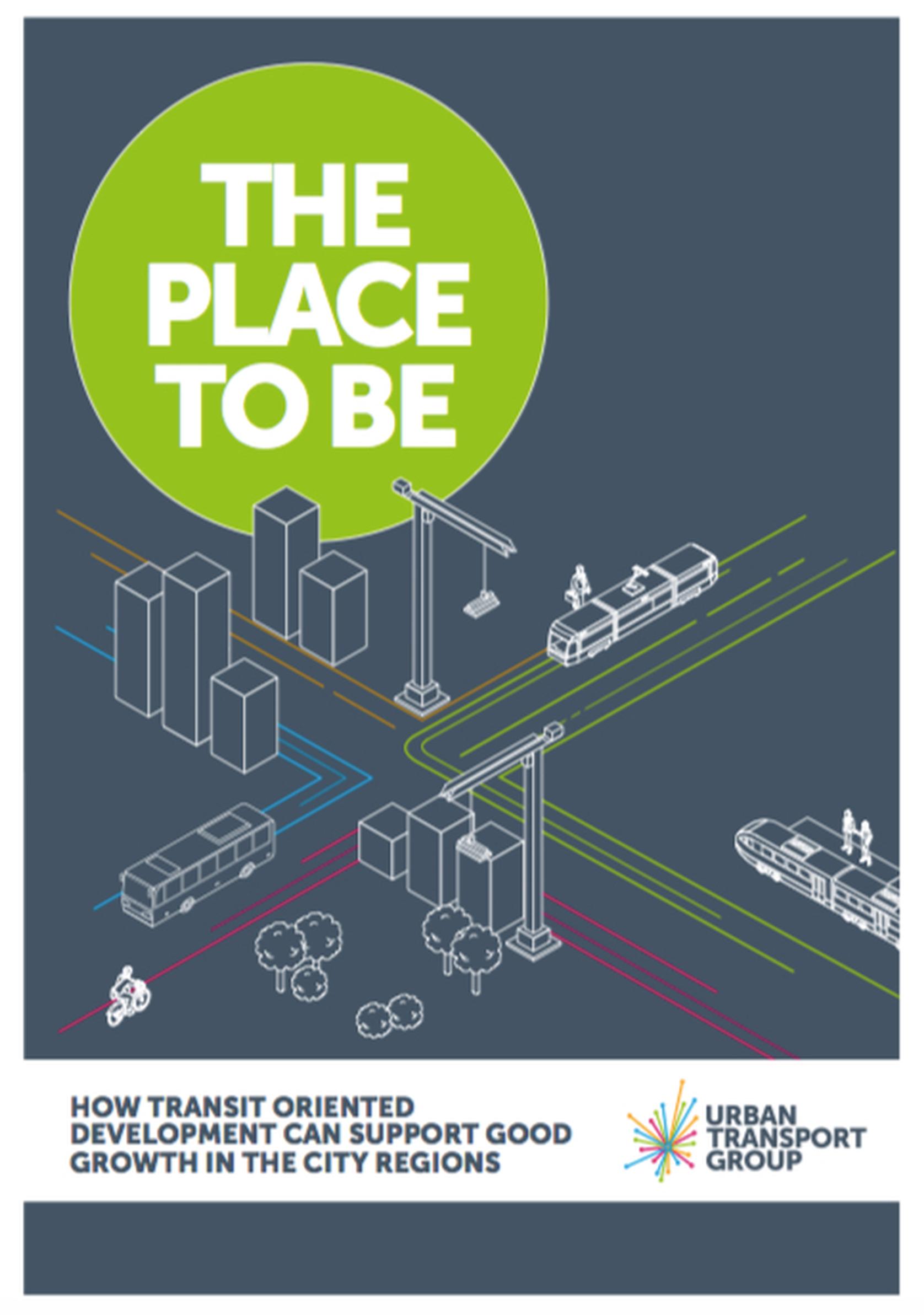

A new national planning framework is urgently needed to place public transport, rather than car-based “low density sprawl”, at the heart of policy for new developments, says a new report by the Urban Transport Group.
This would enable the “agglomeration” of economies – where firms benefit from close proximity to each other – and meet housing demand without making congestion and air quality worse, according to The Place To Be.
Transport Oriented Development (TOD) principles are increasingly featuring in decision-making on transport, planning, housing and land use, it states. “This is, in part, a result of governance changes at the city region level, through the creation of combined authorities and in some areas mayoral combined authorities.”
Investing in improved transport can increase the value of both residential and commercial property through increases in land values, says the report. A national funding framework would ensure that this “value uplift” is used to improve transport connectivity. This needs a joint programme of work between city regional and national government.
Land held by national government agencies would be prime sites for TOD, says the report. “In particular, city region authorities in England need the same veto powers over Network Rail land sales that the Scottish Government currently enjoys.”
There should be more devolution of powers to city region transport authorities to allow them to take on these TOD responsibilities.
The report sets out the seven key factors needed for successful TOD:
• Placing public transport at the heart of a development, whether this is heavy rail, light rail or bus
• Developments should have high density housing and commercial properties to provide “critical mass” for public transport
• TOD neighbourhoods should support walking and cycling as the first choice of accessing public transport and other services
• Driving and ownership of private vehicles should be discouraged through parking restrictions and traffic calming
• Services such as shops, healthcare and schools should be integrated into a development to encourage more localised trips
• Use of brownfield sites should be first choice locations for TOD schemes
• Public sector involvement in TOD schemes would ensure that new developments deliver across urban policy objectives.
“We need to empower city region authorities to make more transit oriented developments happen,” says the report. “This is because it is city region authorities that are accountable to the people and places they serve, and because they understand the local issues, opportunities, businesses and funding opportunities that can make the right connections between them.”
Find out more about Urban Transport Group's research at the Rail Stations & Property Summit
TransportXtra is part of Landor LINKS
© 2025 TransportXtra | Landor LINKS Ltd | All Rights Reserved
Subscriptions, Magazines & Online Access Enquires
[Frequently Asked Questions]
Email: subs.ltt@landor.co.uk | Tel: +44 (0) 20 7091 7959
Shop & Accounts Enquires
Email: accounts@landor.co.uk | Tel: +44 (0) 20 7091 7855
Advertising Sales & Recruitment Enquires
Email: daniel@landor.co.uk | Tel: +44 (0) 20 7091 7861
Events & Conference Enquires
Email: conferences@landor.co.uk | Tel: +44 (0) 20 7091 7865
Press Releases & Editorial Enquires
Email: info@transportxtra.com | Tel: +44 (0) 20 7091 7875
Privacy Policy | Terms and Conditions | Advertise
Web design london by Brainiac Media 2020